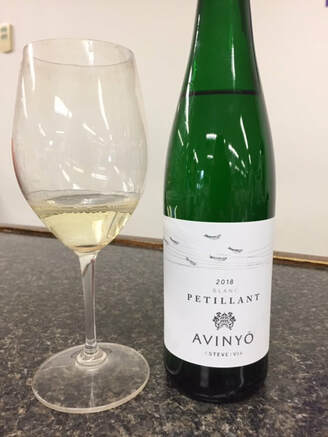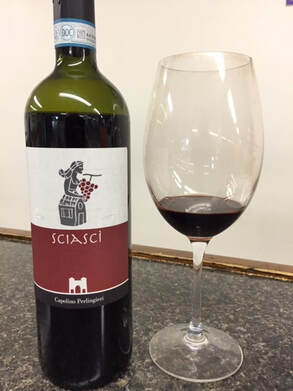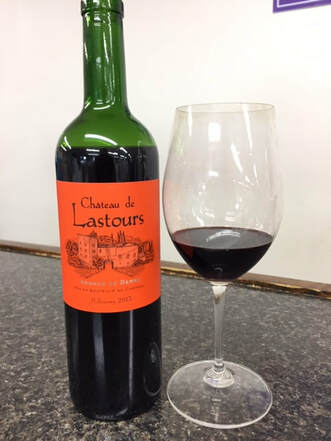 It looks like we have officially put the threat of near-freezing temps behind us for the season (fingers crossed), and can break into the white wine selections for the Insider's Pick with real gusto. This is also the time you start to see the fresh and fun new arrivals from the last year's harvest, which promise to become the 'next big thing' for you to enjoy over the summer. Or it's the return of an old friend that sold out in the fall or winter, so it's time to check back in and remind yourself why you enjoyed it in the first place. Many people find the famously light carbonation of a Vinho Verde from Portugal to be their go-to style this time of year, so much so that the 'Petillant' style is gaining popularity with winemakers in other parts of the world, especially with those that follow a more naturalistic style of winemaking. Avinyo is an artisan Cava producer in Penedes, Spain (a region that already knows a thing or two about putting bubbles in a wine), making what we enthusiastically refer to as 'a Vinho Verde on steroids'. Intrigued? Let us explain. Pouring with a bit of frothy foam and tiny bubbles that largely disappear within the first minute, the aroma is huge with sweet flowers, pears and tropical fruit thanks to the Muscat used. While most Vinho Verde have a light perfume, this absolutely leaps from the glass. As it opens up the initial perfume becomes drier with the arrival of zesty lime and white citrus fruit notes. The palate is drier still, almost completely bone dry in fact, with lots more zesty citrus and an almost dusty grapeskin character that extends long into the finish thanks to the light prickliness of the remaining carbonation on the palate. It is so dry it almost doesn't even match up with the initial floral aromas, which makes for great interplay between the senses. It also impacts differently as the temperature changes, with the aromas much more subdued right out of the fridge and more steely/zesty on the palate, and vice versa as it sits. A great picnic wine because of the lower alcohol, perfect for light snacks and back porch sipping.
0 Comments
 There are likely thousands of wine making grape varieties out in the world, the majority of which are not known by name by even the most astute wine drinkers. Most are local curiosities, grapes that have history with a population but little chance of being appropriated for mass production. In many cases that's just fine, as the wines produced are merely OK or growing the vines are more difficult than need be, so it's no great loss that their names are but a footnote in history. But there are just as many varieties that deserve to be better known, and we love to champion them when we find them. Italy is not surprisingly a treasure trove of hidden gems such as this one from Campania near Naples. The featured grape here is Sciascinoso, barely familiar even to locals as there are less than 1000 acres total planted. The skins have lots of color and tannin to them, so it is almost never featured solo, faring better in blends like this when partnered with the juicier Aglianico grape. The extra time in bottle has also brought much needed polish and elegance, taming the chunky tannins both wines can show in their youth and showing off impressive secondary characters that would never appear when first bottled. Dark in color but showing the distinctive dusty brick tones of age at the corners, the aromas are amazingly complex and ever changing; dusty cherries, powerful incense, dark flowers, hints of sweet currants and gamey meats. This is one where the pleasure is just as much about smelling the wine as tasting it. The palate is more to the high toned red fruits and minerally cranberry tones, with tannins that are super fine but persistent, like a piece of polishing grade sandpaper that shows off an almost citrusy blood orange character to the finish. A great match for Easter lamb, but could also show very well with more exotic Middle East/Far East spice treatments for meat dishes.  The Corbieres region in the Sud of France has always been the high volume 'bread basket' of French wine, with a low emphasis on quality over quantity. Most wine drinker s in America barely register with the name of any producers from the region, save for maybe Domaine de Fontsainte which has been brought in by noted importer Kermit Lynch for 40 years. After that, the reaction is '?????'. In some cases it's the lack of enough quality estates to really bring the public consciousness around from the wealth of producers from the Rhone and more acclaimed areas of the Languedoc. But even when really good ones appear, their choice of Carignan as the featured grape just doesn't seem to catch hold with our population. The grape has a naturally gamey, savory side that can be a bit off-putting to those that prefer juicier and more fruit-forward flavors, and definitely wants food as an accompaniment versus being sipped as a cocktail. More people need to taste the wines from producers like Chateau Lastours that get it all just right, not only with high quality grapes and vineyards to work with but allowing a little more cellar time before release to soften the rougher edges of Carignan into a more exciting wine. Deep in color, the aromas are straight our of central casting for a bistro in Montpellier or Narbonne, bursting with currant, dark cocoa, and savory roasted meats. The bit of bottle age also pulls out a more subtle perfume in the background than usually found from the region, almost a sweet floweriness behind the animal tones. The palate is super impressive for a Corbieres, silky and polished with more cocoa and tangy black fruits from the nose, only hinting at the more gamey side in the background and on the iron/bloody finish. This is the perfect wine with rustic Mediterranean foods with lots of salty meats, olives and roasted character to it. |
The Best of the Best.We offering free tastings on these wines in the store every Thursday and Friday, and a 10% discount off the retail price through the duration of the day. Come on by and give them a try! Archives
July 2024
Categories |
Location |
|

 RSS Feed
RSS Feed